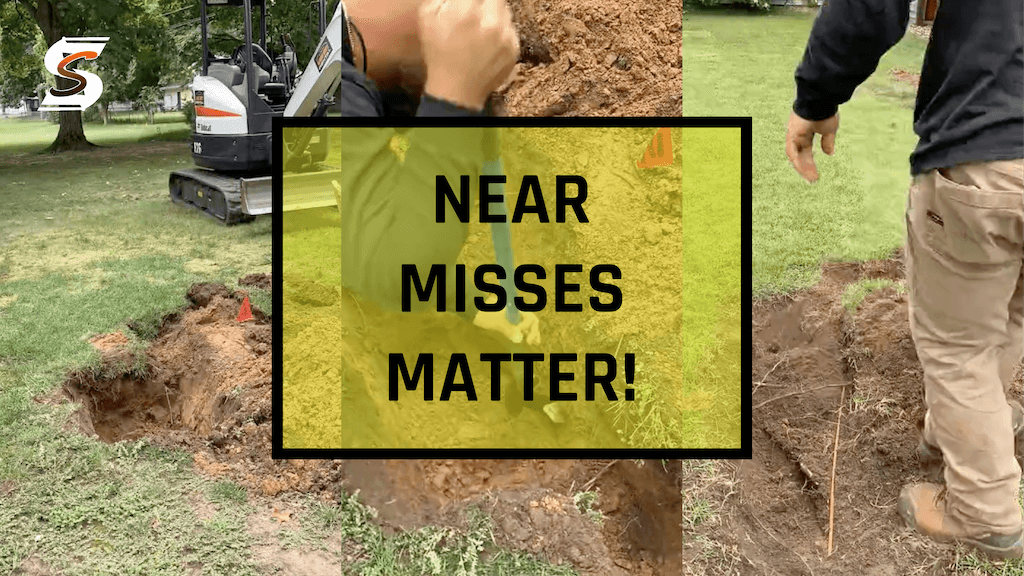
A few days ago, while driving on the highway, I almost witnessed a serious crash. The car in front of me didn't see another vehicle merging until the last minute. In a frantic attempt to avoid a collision, the driver swerved, lost control, and nearly hit the central barrier before managing to regain control. Fortunately, no one was hurt, and the car didn't hit anything. This incident, though seemingly minor, is what we call a near miss. Insurance companies increasingly fit vehicles with devices to track erratic behavior like this because near misses are statistically relevant in preventing future crashes and damages. In the field of utility safety, near-miss reporting plays a similarly crucial role in preventing accidents and ensuring the well-being of workers and the public. Despite its importance, near-miss data, particularly concerning the late locates of buried utilities, is often underreported, leading to missed opportunities for improving safety protocols.
The Significance of Near-Miss Reporting
Near-miss reporting is the process of documenting incidents that could have resulted in an accident but did not, due to either timely intervention or sheer luck. According to Utility Partners, this practice is essential for identifying potential hazards before they lead to serious consequences. By analyzing near-miss data, organizations can implement preventive measures and training programs that enhance overall safety.
For years, the Damage Information Reporting Tool (DIRT) has been a cornerstone in providing industry insights on damages to underground infrastructure. DIRT data is crucial for reducing damages as it provides visibility into the causes of excavation damages and trends over time. This data not only sheds light on the underlying issues but also points the way towards how our industry can save lives, protect communities, and reduce costs.
Challenges in Reporting Late Locates of Buried Utilities
A critical issue highlighted by ECMweb is the underreporting of late locates of buried utilities. Locating and marking underground utilities before excavation is mandated to prevent accidental damage. However, when these locates are performed late, they pose a significant risk of hitting unmarked utilities, potentially causing hazardous incidents. The reluctance to report such near-misses stems from various factors, including fear of blame or disciplinary action, lack of awareness, and inadequate reporting systems.
The Importance of Near Miss Reports
Near miss reports, or discoveries, tell a crucial story in damage prevention. These reports identify circumstances that could have resulted in excavation damage but, fortunately, did not. By examining near miss data, we gain valuable insights into potential excavation damages, allowing us to understand the practices in the field that effectively prevent damages, especially when another stakeholder has made a mistake in fulfilling their responsibilities, or other circumstances negatively impact safe excavation.
Consider a scenario where a crew is potholing and discovers an unmarked utility. Although the unmarked utility was not damaged, it easily could have been. This is a prime example of a near miss. Near miss data provides a much broader picture of what is happening in the field, enabling us to shift emphasis to the best practices, next practices, technology, and education that will prevent damages. For instance, near miss reports can highlight frequent occurrences of unmarked utilities, suggesting a need for improved locating practices or better communication between stakeholders. These insights can lead to targeted training programs, the adoption of advanced detection technologies, and the development of new industry standards aimed at preventing similar near misses in the future.
The Role of the DPI in Reporting Near Misses
While the Damage Prevention Institute (DPI) does not mandate the reporting of near miss data, contributing this information to DIRT can significantly enhance our understanding of field conditions. We rely on excavators to provide accurate accounts of their experiences, which in turn helps us develop more effective support systems. Reporting near misses is a proactive step towards a safer and more efficient excavation industry. It allows us to identify potential risks before they result in actual damages, thereby protecting underground infrastructure and ensuring the safety of workers and communities.
The Common Ground Alliance's (CGA) Near Miss Reports from 2015-2018 provide a comprehensive analysis of near-miss incidents in the utility sector. The data reveals trends and patterns that can guide safety improvements. For instance, a significant number of near-misses involve excavation activities, underscoring the need for stringent adherence to safety protocols during such operations. The CGA report also highlights the importance of collaboration among stakeholders, including utility companies, contractors, and regulatory bodies, to enhance the effectiveness of near-miss reporting systems.
Conclusion
Near-miss reporting is a vital component of utility safety management. By addressing the challenges in reporting, particularly regarding late locates of buried utilities, and learning from documented incidents, the industry can significantly reduce the risk of accidents. Promoting a culture of transparency and continuous improvement will ensure that near-miss data is utilized to its fullest potential, ultimately safeguarding both workers and the public. Near miss reports are an invaluable resource in the ongoing effort to prevent excavation damages. By analyzing and learning from these reports, we can implement better practices, adopt new technologies, and improve education within the industry. Capturing this data and feeding it into a ticket management system allows for learning from these incidents and providing future risk analysis, which is crucial for proactive safety management Together, we can build a safer, more reliable infrastructure system that benefits everyone involved.
Share this Post











